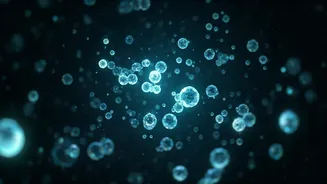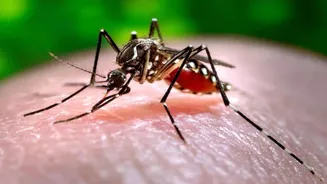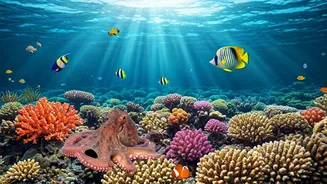Glow-in-the-Dark Sugars
Scientists have devised an exciting new method to study carbon cycling in the ocean, employing sugars that emit light. The technology uses a technique
called Förster Resonance Energy Transfer (FRET). This innovative approach enables researchers to track the behavior of sugars in the marine environment, offering a deeper understanding of carbon's role. These glowing sugars act as tracers, allowing scientists to monitor how sugars are broken down and used in the ocean, providing insights into the intricate processes within the water column. This novel strategy not only reveals microorganisms responsible for sugar degradation but also offers insights into how carbon cycles through the deep ocean ecosystems, helping scientists understand global climate patterns.
FRET Technology Unveiled
At the heart of this research lies FRET, a sophisticated technique. This technique relies on the transfer of energy between two molecules – a donor and an acceptor – when they are in close proximity. In this context, the sugar molecules are chemically modified to include a donor molecule, which, when excited by light, transfers energy to an acceptor molecule. The resulting glow is detectable. FRET enables scientists to monitor the breakdown of sugars in the ocean because the emission of light is dependent on how the sugars interact with the environment and the organisms consuming them. This method has the potential to reveal which microorganisms consume these sugars, as well as the rates at which they are broken down, which can contribute to enhanced comprehension of the carbon cycle. Scientists can also ascertain the amount of carbon absorbed from the atmosphere by understanding the processes of sugar breakdown.
Ocean Carbon Mysteries
The ocean, a critical component of the global carbon cycle, absorbs substantial amounts of carbon dioxide from the atmosphere. However, the precise mechanisms controlling the fate of this absorbed carbon, especially in the deep ocean, are not fully understood. Sugars, serving as essential energy sources for marine life, play a crucial role. Their degradation by microorganisms influences carbon dynamics. By studying how these sugars are broken down, researchers can gain a clearer understanding of the carbon cycle in the ocean and also how the ocean is linked to the planet's climate. The application of the glowing sugar method provides a novel approach to investigating these deep-sea ecosystems, allowing researchers to study previously unknown marine processes.
Unveiling Hidden Degraders
This technique allows the identification of specific microorganisms responsible for breaking down sugars in the ocean. The glowing sugar method provides a way to locate previously unknown 'degraders' within the complex marine environment. By observing the light signals, researchers can pinpoint which microbial communities are actively involved in sugar consumption and degradation. This knowledge can also offer insights into the different types of microorganisms that thrive on various types of sugars. This is critical for assessing how carbon cycles through the ecosystem. Identifying these hidden degraders improves our comprehension of the ocean's biological processes.
Secrets of Carbon Cycle
Ultimately, the research aims to unravel the mysteries of the carbon cycle in the ocean, revealing its impact on the climate. Understanding the dynamics of sugar breakdown and the role of specific microorganisms will provide valuable insights into the carbon cycle's operation. This can lead to a more accurate understanding of the ocean's capacity to absorb atmospheric carbon dioxide, as well as its contribution to the global climate system. By gaining deeper knowledge of these processes, scientists can formulate better-informed models and forecasts concerning climate change. This will help understand the profound impacts of the marine carbon cycle.














